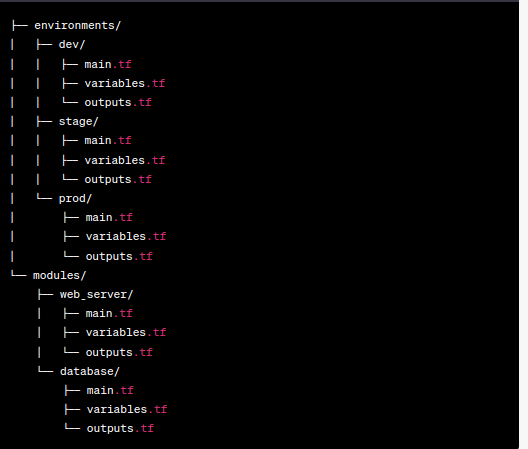How To Manage Multiple Environments With Terraform?
Last Updated :
19 Oct, 2023
In today’s dynamic tech ecosystem, Infrastructure as Code (IaC) has evolved into a linchpin for automating the deployment and management of infrastructure resources. Among the leading IaC tools, Terraform stands out for its versatility and robustness. One of the most critical challenges in infrastructure management is effectively managing multiple environments, such as development, staging, and production, while using Terraform as the infrastructure orchestrator. In this comprehensive guide, we will explore the art of managing multiple environments with Terraform, providing detailed explanations, practical examples, and a FAQ section to address common questions.
The Significance of Environments
Before we dive into the intricacies of using Terraform to manage multiple environments, let’s underscore the importance of this practice.Environments denote discrete stages in the software development and deployment life cycle, each with its specific purpose and configurations. Managing these environments skill-fully is essential for maintaining consistency, testing changes, and minimising disruptions.
Organising Your Terraform Code
Efficient code organisation serves as the foundation for managing multiple environments in Terraform. Let’s explore some strategies to keep your Terraform code base neat and structured:
1. Directory Structure
Begin by creating a logical directory structure that segregates your Terraform configurations. Here is a sample directory structure:

This hierarchical structure segregates environment-specific configurations and keeps reusable modules well-organized.
2. Environment-Specific Variables
Terraform’s variable system enables parameterization of your configurations for different environments. Below is an example of defining environment-specific variables in a variables.tf file:

These variables empower you to adapt your codebase seamlessly to different environments.
3. Remote State Management
Consider adopting a remote state backend, such as AWS S3 or HashiCorp Consul, to store your Terraform state files. This practice promotes collaboration and provides secure, remote access to your state data.
Creating Environment-specific Resources
With your code organised, let’s delve into the creation of environment-specific resources:
1. Resource Tagging
Tagging resources with environment-specific metadata is a best practice. For instance, tag EC2 instances as follows:

These tags simplify the identification and management of resources across different environments.
2. Conditional Resource Creation
You can conditionally create or modify resources based on the environment by utilizing count or for_each blocks. Suppose you need additional instances in the staging environment:

This flexibility ensures that resources are provisioned in alignment with each environment’s unique requirements.
Managing State and Workspaces
Terraform workspaces serve as a potent tool for managing multiple environments within a single codebase:
1. Creating Workspaces
To establish a new workspace for an environment, employ these Terraform commands:

2. Selecting Workspaces
Switch between workspaces through the terraform workspace select command:

This practice ensures that your Terraform configurations and state files remain segregated for each environment.
Conclusion
Effectively managing multiple environments with Terraform is pivotal for maintaining infrastructure consistency, scalability, and agility. By adhering to best practices in code organization, variable usage, and workspace management, you can streamline your infrastructure provisioning process and ensure your environments are robust and adaptable. Terraform’s flexibility and power make it an invaluable tool in your infrastructure toolkit, enabling you to master the art of managing multiple environments with ease.
FAQs on Multiple Environments With Terraform
1. Why Is Managing Multiple Environments Important In Terraform?
Managing multiple environments ensures that you can develop, test, and deploy infrastructure changes safely and consistently across different stages of your application’s lifecycle.
2. Can I Use Terraform For Multi-Cloud Environment Management?
Absolutely. Terraform is cloud-agnostic, enabling you to manage infrastructure across various cloud providers and even on-premises environments.
3. What Are Some Best Practices For Terraform State Management In A Team?
Implement a remote state backend, employ state locking, and establish clear state management procedures to ensure smooth collaboration and conflict prevention in team environments.
Share your thoughts in the comments
Please Login to comment...